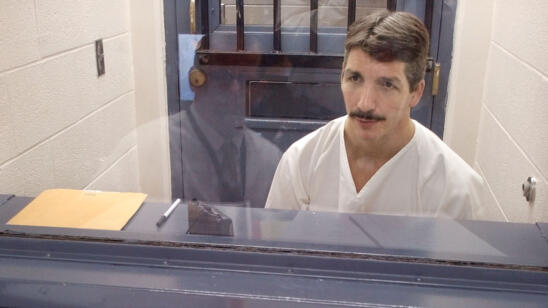On February 24, 1986, John Ruetten came home to find his wife, 29-year-old Sherri Rasmussen, dead in the living room of their Los Angeles home. After biting Rasmussen’s arm and smashing a vase in her face, her attacker had shot her three times using a blanket in the living room to muffle the sound. The LAPD took DNA samples from the bite mark, but it would still take 23 years before investigators realized that the killer was one of the department’s own detectives.
The longer a case goes cold, the less likely investigators are to solve it. This is especially true with cases as old as the Jack the Ripper murders in 1888 or the Black Dahlia murder in 1947, both of which took place before police began saving DNA evidence, and have been cold so long that anyone with information about the crime has already died.
However, there are several cold cases that police have solved, or may be close to being solved, after 20, 30 or even 40 years, as investigators make use of new technology, new research techniques and re-examine leads that previous investigators may have ignored.
A Killer Detective
Before dying, Rasmussen had told her father that LAPD detective Stephanie Lazarus, who’d briefly dated Rasmussen’s husband, had begun acting aggressively toward her and abruptly showing up at her home and office. Rasmussen’s father told the LAPD he suspected Lazarus of killing his daughter, but the homicide detective on the case dismissed it.
Over the next couple of decades, the LAPD also “lost” the DNA sample from the bite mark on Rasmussen’s arm as well as its own interviews with Rasmussen’s father. Reporting from Vanity Fair suggests members of LAPD conspired to protect Lazarus by hiding evidence that implicated her.
It wasn’t until 2004 that criminologist Jennifer Francis rediscovered the DNA swab from the bite mark on Rasmussen’s arm while reviewing cold cases. In 2009, other detectives reviewing the case began to suspect Lazarus’ involvement. They surreptitiously tested a straw she had used, and discovered the saliva on the straw matched the DNA found on Rasmussen’s arm.
Armed with this evidence, LAPD arrested the 49-year-old detective. In 2012, Lazarus was convicted of Rasmussen’s murder and sentenced to 27 years to life in prison.
Forensic Genealogy Solving Cold Cases
But what about cases where there is DNA evidence, but no obvious leads? Increasingly, that’s where “forensic genealogy” comes into play.
Forensic genealogists Colleen Fitzpatrick and Margaret Press, who co-founded DNA Doe Project, regularly use an open-source DNA database called GEDmatch to help police identify the dead bodies of unknown persons. And this year, Fitzpatrick also used it to help police arrest the killer in a murder case that had been cold for nearly 28 years.
Here’s how forensic genealogy works: After uploading an unknown person’s DNA to GEDmatch—which contains data from Ancentry.com, 23andMe and other commercial DNA testing companies—the database provides a long list of that person’s DNA relatives.
“Typically you may have 2,000, but let’s say you had 20,” Fitzpatrick tells A&E True Crime. “You figure out who the 20 people are, then you start building the family trees of each one of those people.” Ideally, these will separate into two groups, representing the two sides of the person’s family. “Your job now is to find somebody from one group who married somebody from the other group, and one of their children would be your unknown person.”
The Golden State Killer Case
In practice, the connections don’t always work out so cleanly. (Adopted children or those conceived by sperm donation are not genetically related to both parents who raise them.) In addition, many people have privacy concerns about using personal DNA data in this way. But after forensic genealogy helped identify a 72-year-old ex-cop named Joseph James DeAngelo as a Golden State Killer suspect in April 2018, nearly 42 years after his first alleged violent crime, there was a surge of similar identifications using forensic genealogy.
“When the Golden State Killer happened, there were a lot of simple cases—‘oh-my-god cases,’ I call them—where those cases are just waiting for the tools to be invented,” Fitzpatrick says. It’s similar, she adds, to when California first started automated fingerprint analysis. There were a lot of hits in the database, she says, “because those were cases waiting to be solved by that technology.”
For example, in November 2018 police finally made an arrest in a cold case involving the 1973 murder of 21-year-old Leslie Marie Perlov in Palo Alto. For 45 years, police had been unable to find a suspect whose DNA matched that found on Perlov’s body. But after using forensic genealogy, police quickly identified 74-year-old John Arthur Getreu as a suspect and tested his DNA. It matched, and police arrested and charged him for Perlov’s murder. He has pled not guilty and is awaiting trial.
Fitzpatrick thinks the surge in these types of “oh my god” cases is winding down, but she was also involved with solving one herself recently.
The Sarah Yarborough Cold Case
In late September of 2019, she contacted the King County Sheriff’s Office in Washington state about a cold case it had asked her to help with: the rape and murder of 16-year-old Sarah Yarborough in Seattle on December 14, 1991.
Fitzpatrick told the office that through forensic genealogy, she and her team had identified 55-year-old Patrick Leon Nicholas and his brother as possible suspects. After ruling out the brother, officers monitored Nicholas and retrieved two cigarette butts and a napkin that he dropped outside of a dry-cleaning business. Investigators found his DNA matched Yarborough’s attacker, and arrested him on October 2. He was charged with first-degree murder and has pled not guilty. Without forensic genealogy, police might not have had any way of narrowing him down in the suspect pool this long after the murder.
“It was very emotional,” Fitzpatrick says of her involvement with the case. “The genealogists on this case did a superb job who were working for me. It’s fabulous to give the family so much peace.”
*For more on cold cases, watch full episodes of Cold Case Files, no sign in required.*
Related Features:
Why Aren’t Police Solving More Murders With Genealogy Websites?
The Burger Chef Cold Case: Four Murders Still Unsolved Over 40 Years Later
Investigative Journalist Billy Jensen on Using Facebook to Solve Murders
Murders in the Wild: Cold Cases in U.S. National Parks
Unsolved ‘Vigilante’ Murder in the Heartland: Missouri Town Goes Quiet After Bully Is Shot


